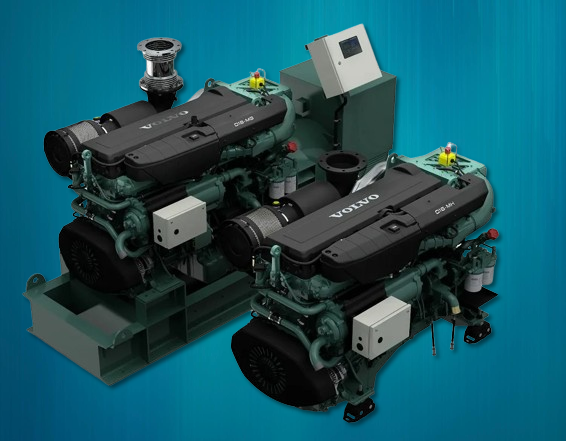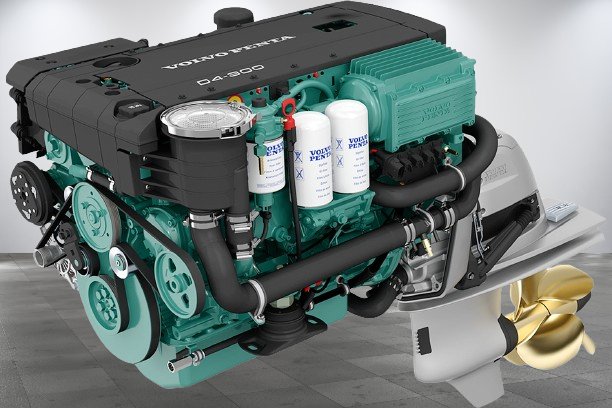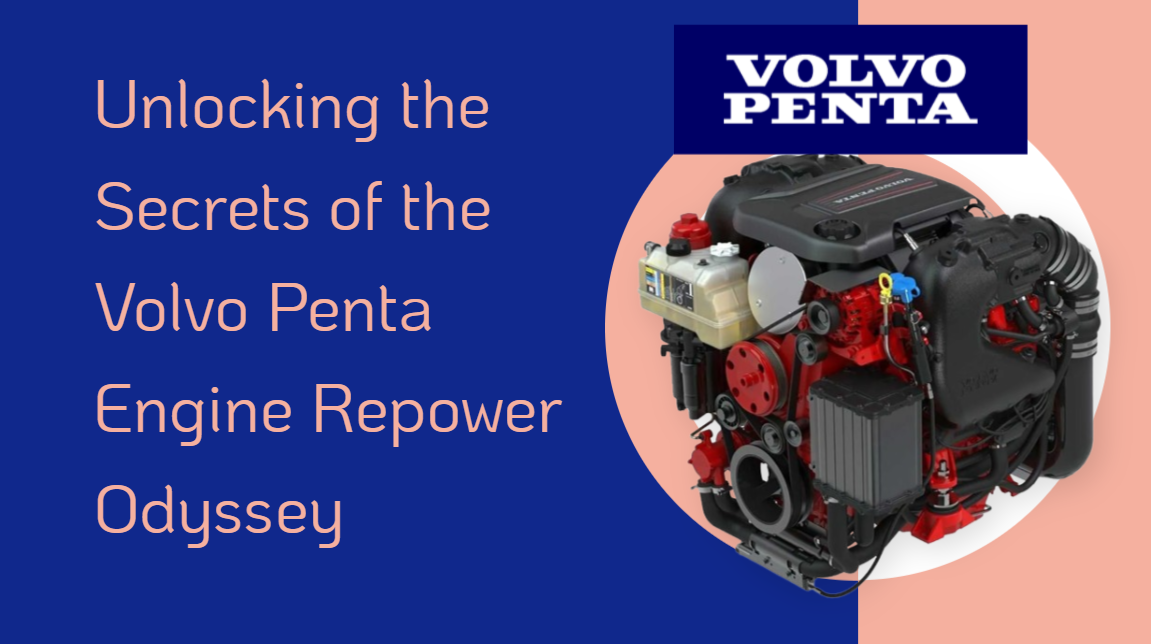For many boat owners, repowering with a new Volvo Penta engine is an exciting opportunity to breathe new life into their vessel. As your trusty powerplant ages, problems like increased fuel consumption, poor performance, and frequent breakdowns can seriously hamper your boating enjoyment. In this definitive guide, we’ll unlock all the secrets to executing a successful Volvo Penta engine repower, from choosing the right marine engine to managing the costs and complexities. This process is an investment in the longevity and performance of your boat, ensuring years of dependable power and memorable adventures on the water.
Table of Contents
- Choosing Your New Volvo Penta Engine
- Budgeting for the Repower
- Preparing Your Boat for the Repower
- The Engine Installation Process
- Breaking In Your New Volvo Penta Engine
- Common Mistakes to Avoid
- FAQs
- Conclusion
Unveiling the True Volvo Penta Repair Expenses: A Comprehensive Breakdown
How to Choose the Right Volvo Penta Parts for Your Engine
Choosing Your New Volvo Penta Engine
The first major decision in any repower project is selecting the Volvo Penta engine model and specification that best fits your boat and needs. Volvo Penta offers a diverse range of engines, including gasoline and diesel options across several product lines, demonstrating their commitment to providing robust engines for various industrial applications and marine uses. As a leading industrial engine manufacturer and internal combustion engine manufacturer, their expertise is unmatched in the marine engine industry.
Gasoline Engines: 3.0L 4-cylinder, 4.3L V6, 5.0L V8, 5.7L V8, 8.1L V8 Diesel Engines: D1/D2 Series 4-cylinder, D3 Series 5-cylinder, D4/D6 Series 4/6-cylinder, D8 Series 6-cylinder
Consider factors like your typical boating activities, desired performance, and fuel efficiency needs when choosing an engine platform. Work closely with your Volvo Penta dealer, who acts as your engine partner, to ensure you select the right powerplant for your boat. They can provide valuable insights into marine engine stock specifications, stock marine engine specifications, and help you find the correct engine for optimal performance. Opting for an inboard engine or considering sterndrive engine applications are crucial decisions.
Pro Tip: Opting for a new common-rail diesel like the D4 or D6 can provide a major boost in torque, range, and fuel economy versus an older gasoline model, showcasing the benefits of advanced marine engines and their lower emission levels through effective Emission control.

Budgeting for the Repower
Repowering your boat is a significant financial undertaking. In addition to the cost of the new Volvo Penta engine itself, you’ll need to account for several other expenses. This comprehensive breakdown will help you understand the true Volvo Penta repair expenses. When considering your budget, think about the long-term benefits of an Engine RESTORATION or a complete replacement that provides performance-oriented, reliable engine operation.
- Engine Costs: $8,000 – $60,000+ depending on model, whether you choose a base engine or a more complex INBOARD MPI engine package.
- Labor Costs: $1,000 – $5,000 for removal and installation.
- Exhaust System Modifications: $500 – $3,000 for new risers, elbows, mufflers.
- Control System Upgrades: $1,000 – $5,000 for new cables, helms, instrumentation, including Dual engine control levers if applicable.
- Fuel System Upgrades: $500 – $2,000 for new tanks, lines, filters. Consider the compatibility with non-port fuel-injected Industrial engines.
- Cooling System Upgrades: $300 – $1,500 for new pumps, plumbing, heat exchangers.
Common Mistake: Failing to budget for all associated costs can lead to unexpected expenses during the repower process. Many experienced repowers recommend budgeting at least 10-20% above the quoted costs to cover any unforeseen issues, ensuring you have the resources for a smooth transition to your new Volvo Penta Marine Engine. This ensures your industrial power systems or complete power solutions are well-funded.
Preparing Your Boat for the Repower
Once you’ve chosen your new Volvo Penta engine and budgeted accordingly, it’s time to start preparing your boat for the swap. This involves meticulous documentation, careful removal of the old engine, and thorough inspection and repair. Whether you’re dealing with base marine engines or specific combustion engines, proper preparation is key.
- Documenting the Current Setup: Take extensive photos/measurements, note locations of existing components, and record cable/hose routings. Pay close attention to engine features and the existing engine block casting.
- Stripping Out the Old Engine: Remove exhaust systems, control cables, drain and properly dispose of all fluids, and safely extract the inboard engine from the vessel. If you’re considering an outboard engine conversion, this step will differ.
- Inspecting and Repairing: Check mounts, stringers, and engine beds, repair any corrosion or damage, and upgrade components as needed. This phase often involves Engine RESTORATION or considering an Engine REMANUFACTURED unit.
Tools You’ll Need:
- Measuring tape and calipers
- Camera for documentation
- Wrenches, sockets, and other basic hand tools
Having a comprehensive game plan and taking your time during this preparation phase helps ensure the new engine will drop in seamlessly, laying the groundwork for a successful Volvo Penta Marine repower. This also applies to considerations for industrial power solutions or even electric power options for marine uses.
The Engine Installation Process
With the old engine out and your boat prepped, it’s finally time for the main event – installing your new Volvo Penta powerplant. This process is crucial for optimal performance and longevity and involves integrating your ideal engine package for your boat drive.
- Mounting the Engine: Precisely position and secure motor mounts, align engines for multi-bank installations, and torque all hardware to spec. This is critical for both inboard diesel engine and gasoline options.
- Exhaust System Installation: Mount new risers and elbows, route exhaust hoses or bellows, and install mufflers and thru-hull fittings.
- Running Control Cables: Install new shift, throttle, and actuator cables, mount new helms and instrumentation, and calibrate engine response and idle settings.
- Plumbing Fuel and Cooling: Mount new fuel tanks and supply lines, install new water pumps and plumbing runs, and connect cooling system pickups and hoses. This is vital whether you’re working with a standard base engine or a specialized Inboard Shaft Diesel Engine.
- Wiring Electrical Components: Connect batteries, alternators, engine grounds, install engine monitoring senders and displays, and integrate with accessories like generators, contributing to complete power systems.
Expert Insight: “Having an experienced Volvo Penta technician handle this critical work ensures everything is installed to factory specifications, providing you with a high-quality Volvo Penta Marine Engine and reliable power generation capabilities. They understand the nuances of the marine engine market and can offer the best industrial power solution offer.”your time during this preparation phase helps ensure the new engine will drop in seamlessly.
The Volvo Penta Outdrive Advantage: Costs, Factors, and Strategies
.

Breaking In Your New Volvo Penta Engine
With your new Volvo Penta engine finally installed and operational, it’s time to break it in properly. This careful process is vital for the longevity and optimal performance of your new marine engine. This applies to any internal combustion engines for marine use.
- Varying engine speeds during initial running.
- Checking fluid levels and temperatures frequently.
- Inspecting for any leaks, vibrations or abnormalities.
- Performing the first few scheduled maintenance services.
- Gradually increasing operational loads over several cycles.
Long-term Considerations:
- Follow Volvo Penta’s break-in procedures to the letter.
- Skipping the break-in period can severely impact your performance-oriented, reliable engine longevity and performance.
- Be patient during this critical phase, as it ensures your Volvo Penta Marine Engine delivers maximum uptime. This dedication helps you maintain a competitive edge for boat manufacturers.
Common Mistakes to Avoid
- Failing to budget for all associated costs.
- Rushing through the preparation phase.
- Cutting corners during the installation process.
- Skipping the break-in period.
- Not following Volvo Penta’s recommended maintenance schedule.
Discover innovative marine and industrial solutions with Volvo Penta. Explore their advanced engines and services designed for performance and reliability. Learn more at www.volvopenta.com, your trusted supplier of power solutions.

Learn more at www.volvopenta.com.
FAQs
Volvo Penta Service: Frequently Asked Questions
Conclusion
By unlocking the secrets of the Volvo Penta engine repower odyssey, you’re embarking on a journey to breathe new life into your vessel. With careful planning, budgeting, and a commitment to doing it right, you’ll be rewarded with years of memorable adventures, all fueled by the power of Volvo Penta excellence. Don’t fear the repower process – embrace this odyssey as the path to unlocking a new era of boating freedom with your enhanced performance-oriented, reliable engine.
Additional Resources
- Diving Deep into Volvo Penta Costs: What to Expect When Repowering
- Volvo Penta Outboard: Frequently Asked Questions
- Unlocking the Secrets of Volvo Penta Maintenance: Frequently Asked Questions
[CATALOG_LINK:

